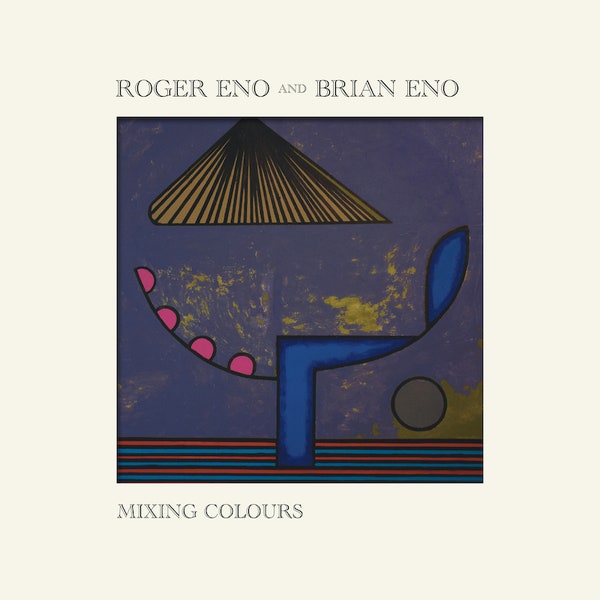Brian and Roger Eno aim to take things slow with their new collaboration Mixing Colours.
Roger, a centerpiece in the ambient genre in his own right, has been working in the music industry since the early 1980s. While not procuring as much attention as his older sibling, Roger’s work is just as engrossing. The two have worked together occasionally in the past, namely 1983’s Apollo: Atmospheres and Soundtracks and the third entry in the acclaimed Music for Films series. Both artists have also worked with new-age luminary Laraaji.
Mixing Colours aims to quell the world’s elevated stress with a calming, meditative experience. Each track contains beautiful classical instrumentation that immediately evokes images of transience, wind chimes, and light snowfall. The organic piano compositions feel like a harmonious auditory current that simultaneously feels intimate and expansive.
This is an album that wants its listeners to take their time and appreciate the smaller details within our very limited lifetimes. Within Mixing Colours‘ 18 songs, the Eno brothers construct a world in their music that is infinitely in a state of zen.
In some respects, the sound feels like an extension of Brian Eno’s work on Music for Airports and subsequently with Harold Budd on Ambient 2: Plateaux of Mirror. That album saw Budd working with acoustic piano with Eno providing treatments. Mixing Colours follows a similar approach.
Roger’s compositions on “Celeste” are brought to their fullest extent alongside the electronic accompaniments that Brian delivers. It is tender, but also riveting, as both intertwine into a blissful conclusion. In contrast, “Obsidian” is a near neoclassical surprise that feels slightly despondent as the organ instills a slight twinge of dread.
As evocative as some of these songs can be, many of the structures seem derivative of Brian Eno’s earlier albums. Eno devotees will almost instantly notice the comparisons between Mixing Colours and those aforementioned albums, Music for Airports and Plateaux of Mirror. While Roger’s contributions are most definitely present in creating these vast soundscapes, far too many songs on Mixing Colours feel like moments that have already been done better.
“Wintergreen”, for instance, sounds too like many of Harold Budd’s notes on Ambient 2‘s “First Light.” In a similar fashion, “Ultramarine” draws comparisons to “Not Yet Remembered.” These moments don’t immediately take away from the album’s enjoyment, but it is worth mentioning in this case.
Advertisement
Mixing Colours is a breath of fresh air in a time where everyone is constantly looking for catharsis. This record comes at a pivotal point where, despite our attempts, things seem to only be getting more harrowing. It’s albums like these that give us a chance to reflect and take in the small things, especially when everything seems so cacophonous.
Advertisement
